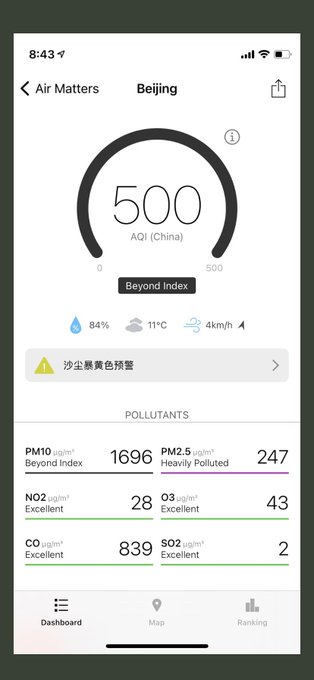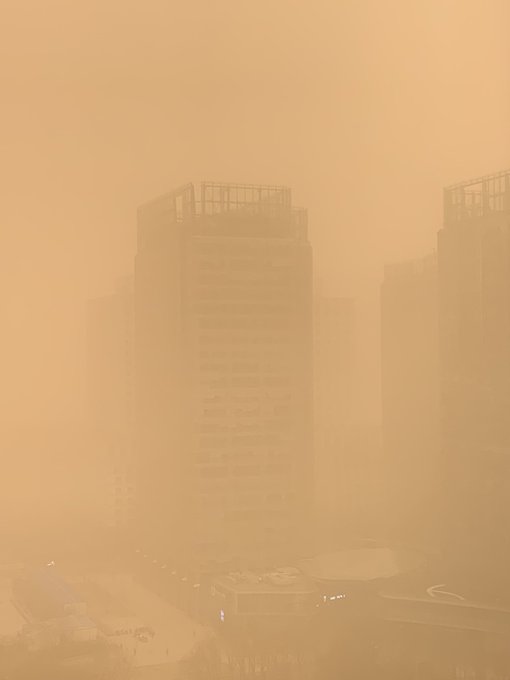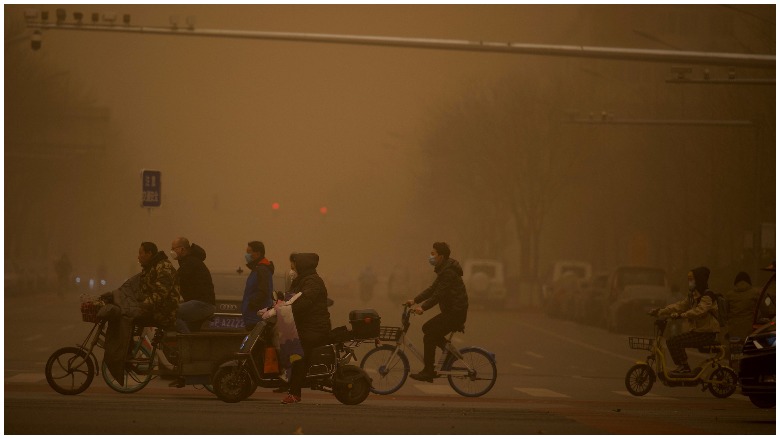
Getty People cross a street during a sandstorm in Beijing on March 15, 2021.
China has been hit with its largest sandstorm in more than a decade. According to Reuters, Beijing was enveloped in dust blown in from the Gobi Desert and other areas of northwestern China near the capital city on March 15.
Pictures and videos, such as this one shared on YouTube by an account called “Truth,” show orange and yellow skies and in some areas, dust thick enough to obscure the tops of buildings. The Weather Channel, citing China’s environment ministry, reported people could expect to deal with the effects of the sandstorm until Wednesday or Thursday as winds moved further to the south.
Here’s what you need to know:
China Issued a Yellow Alert as Air Pollution Reached Dangerous Levels
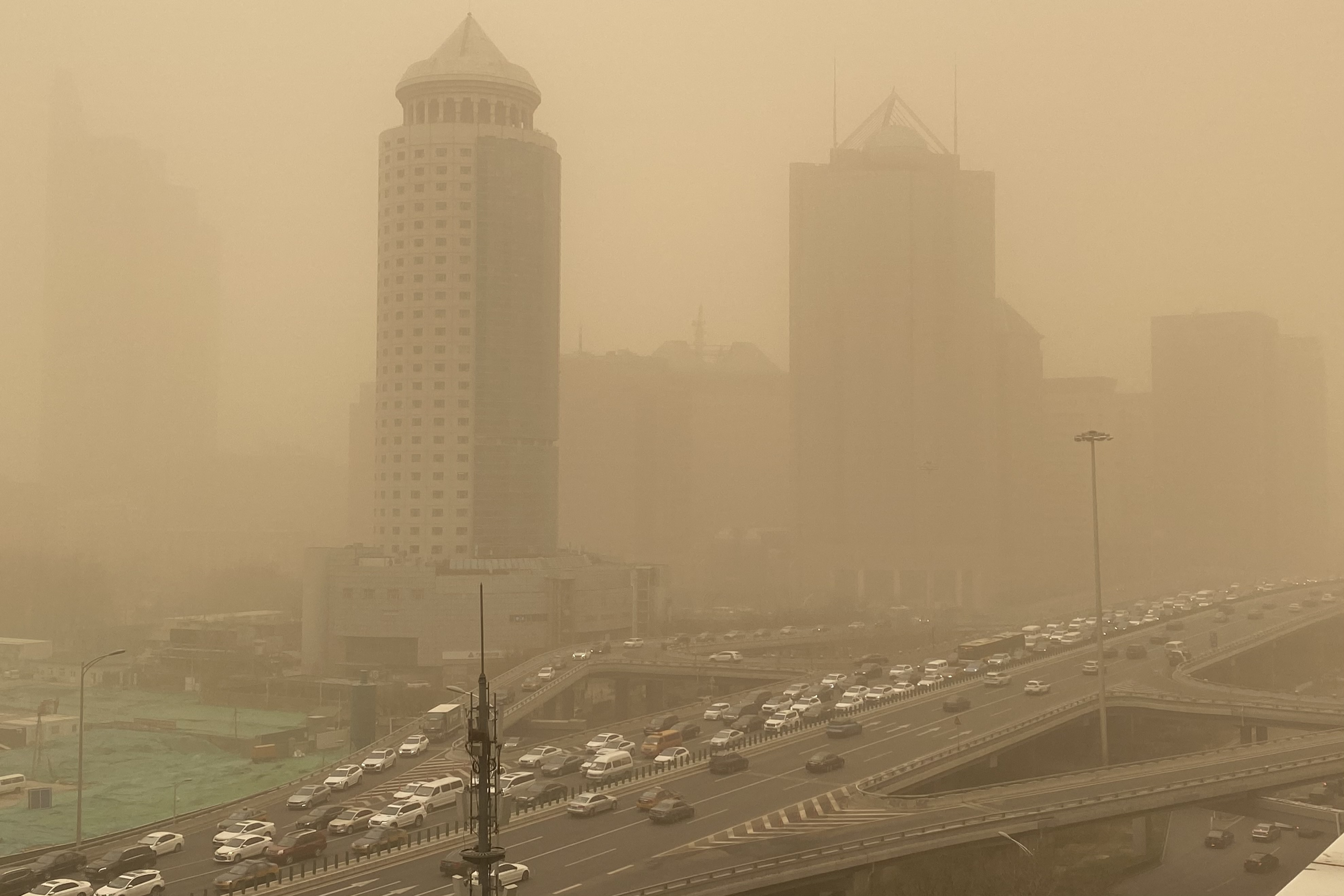
Getty Buildings are seen in the central business district of Beijing during a sandstorm on March 15, 2021.
People in Beijing were advised to stay inside, CNN reported, as air pollution levels reached dangerous levels in the city. Hundreds of flights were canceled, highways were closed and schools were told to cancel outdoor activities, the Washington Post reported. The newspaper also cited China’s Meteorological Center, which put out a statement describing the weather event as “the most intense sandstorm our country has encountered in the last 10 years, which has also been the most wide-reaching.”

Getty People wear protective masks as they commute during a sandstorm on March 15, 2021 in Beijing, China.
As Macau Business reported, China’s weather warning system has a color-coded warning system specifically created for sandstorms. The country’s National Meteorological Center issued a yellow alert. Red is the most severe, followed by orange. Blue is the least serious.
One of the issues impacting safety was the PM 10 level in the air. According to the U.S. Environmental Protection Agency, PM stands for “particulate matter,” which is described as a “mixture of solid particles and liquid droplets found in the air.” PM 10 relates to “inhalable particles, with diameters that are generally 10 micrometers and smaller.”
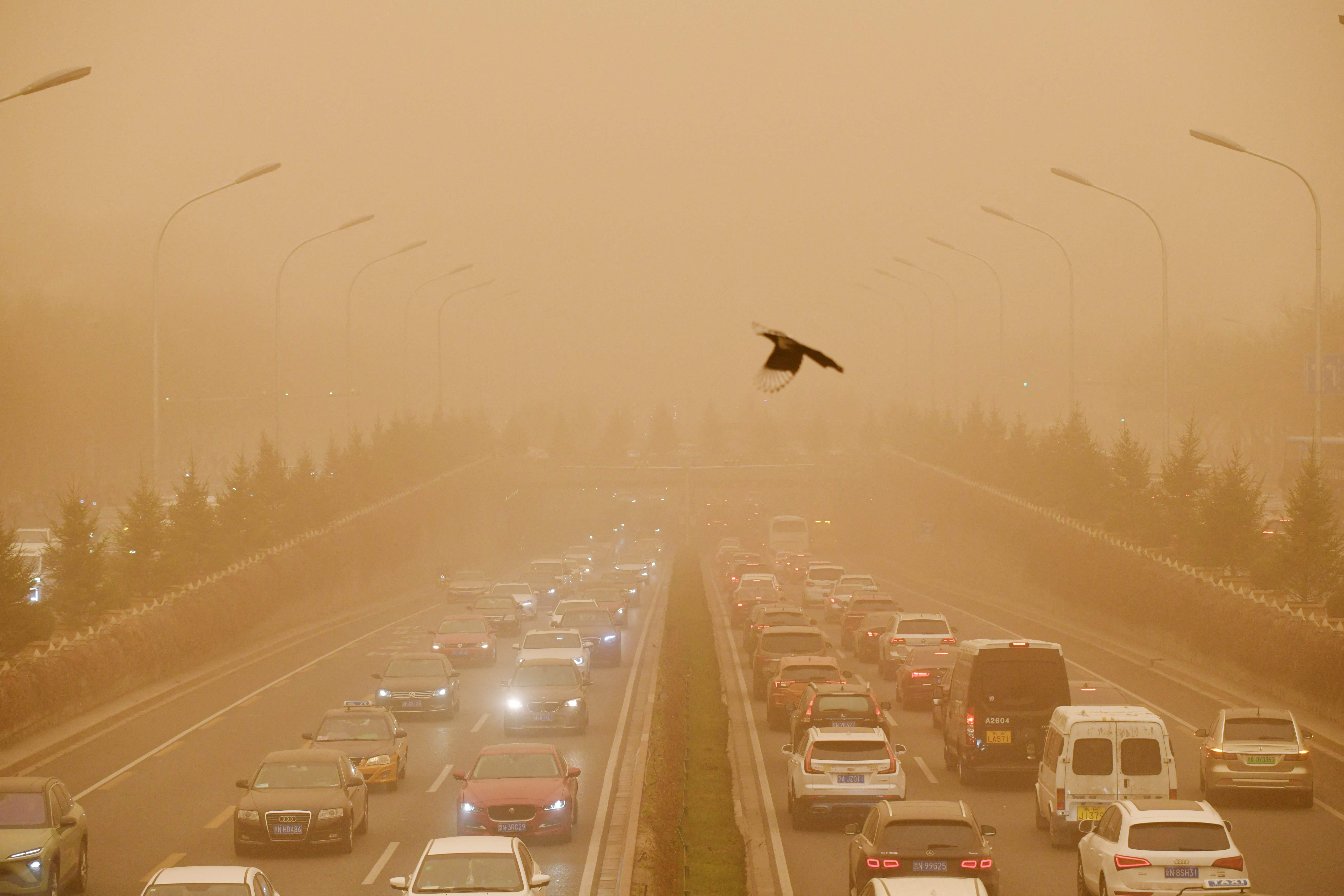
Getty Motorists commute on a road during a sandstorm in Beijing on March 15, 2021.
The BBC and Al Jazeera, citing China’s state-run media outlet The Global Times, reported the PM 10 pollution in several areas of Beijing reached more than 8,100 micrograms per cubic meter following the sandstorm. The BBC explained the pollution levels were “at 160 times the recommended limit” in some districts.
Al Jazeera added the air quality index in Beijing “reached a maximum level of 500” on the morning of March 15. According to the World Air Quality Index, air quality levels between 0-50 are considered “good.” 50-100 is “moderate,” 100-150 is “unhealthy for sensitive groups” and 150-300 is considered “unhealthy and very unhealthy.” Levels from 300 to 500 are designated as “hazardous.”
China Has Been Working to Reduce the Impact of Sandstorms
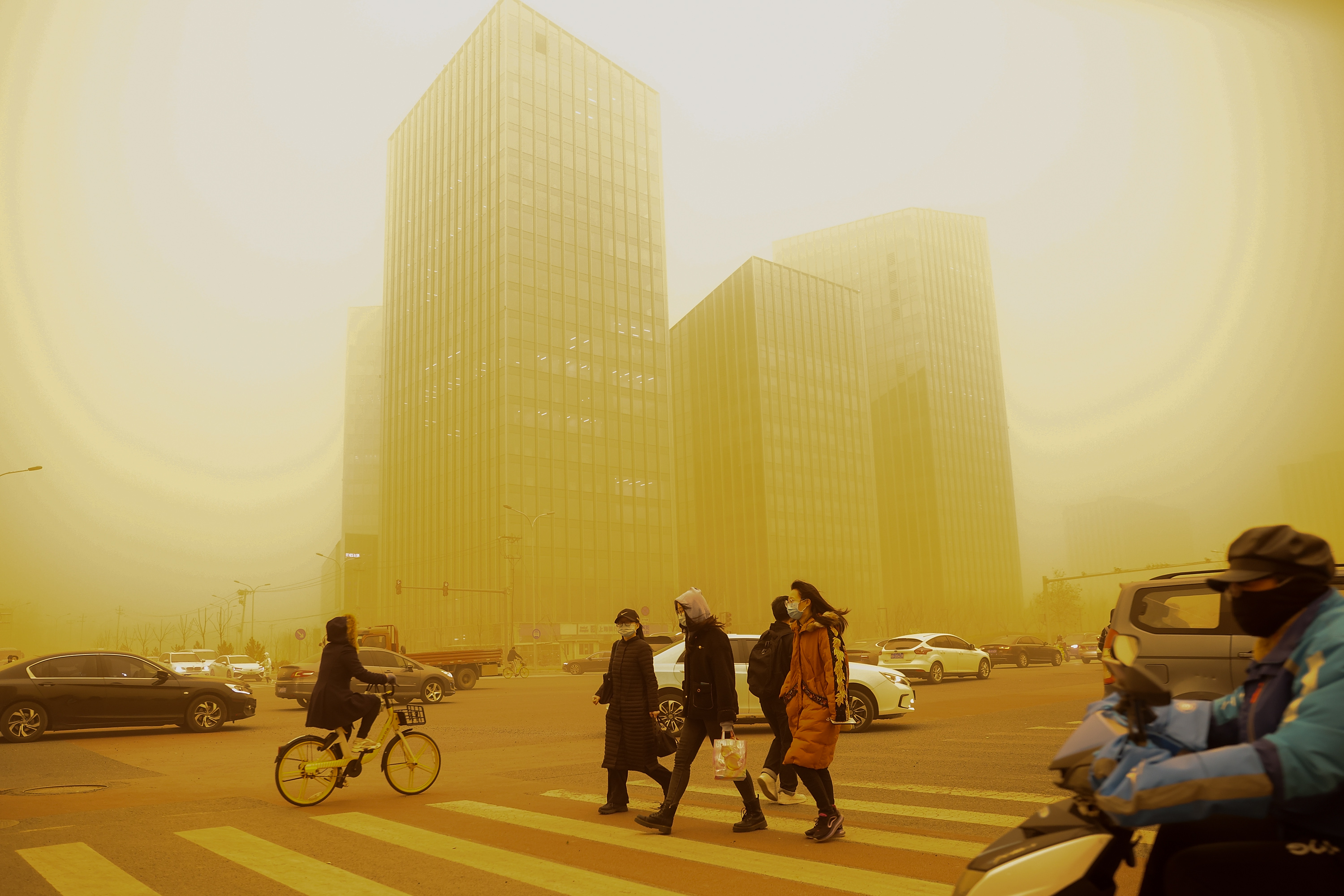
GettyPeople wearing protective masks cross a street during a sandstorm on March 15, 2021 in Beijing, China.
As the Weather Channel reported, sandstorms have traditionally been a regular occurrence in Beijing due to the city’s location near the Gobi Desert. But China has been working to reduce the impact of sandstorms for the past couple of decades. According to the state-run Xinhua news agency, Beijing used to experience as many as 26 sandstorm days per year in the 1950s. But by 2010, that number had been dwindled down to three days.
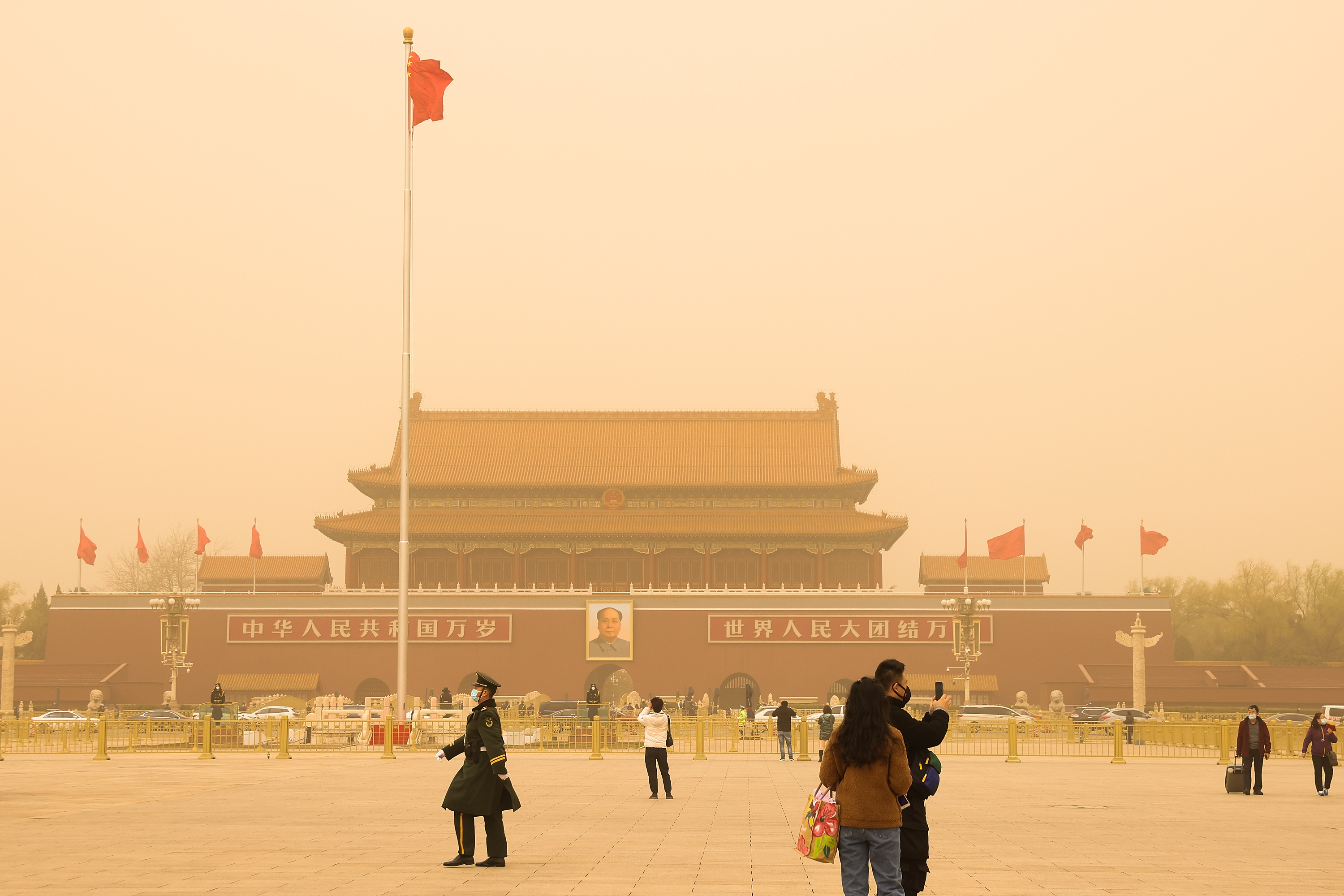
Getty A general view of Tiananmen Square shrouded during a sandstorm on March 15, 2021 in Beijing, China.
As Reuters reported, reforestation has been a major part of the effort. The news service explained that by planting more trees, Chinese officials hoped to create a “great green wall” that could block dust from the Gobi Desert from blanketing Beijing. Officials also “tried to create air corridors that channel the wind and allow sand and other pollutants to pass through more quickly.”
Macau Business cited China Meteorological Administration official Zhang Bihui, who insisted, “The dust will not become the norm in the future.” The spokesperson attributed the decrease in annual sandstorm days with the reforestation efforts.
But Li Shuo, the policy director for Greenpeace China, has expressed skepticism about the efforts. He wrote on Twitter amid this sandstorm, “Beijing is what an ecological crisis looks like. After two weeks of smog and static air, strong wind carries a sand storm in, sending AQI off the chart. It’s hard to claim we are moving forward when you can’t see what’s in front.” He also told the New York Times the sandstorm could be blamed on “land and ecological degradation in the north and west of Beijing,” and an increase of industrial pollution.
READ NEXT: Disney Guest Accused of Spitting on Security Guard Who Asked Him to Wear Mask
